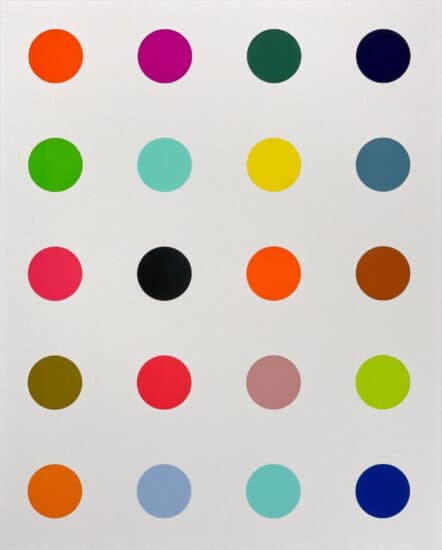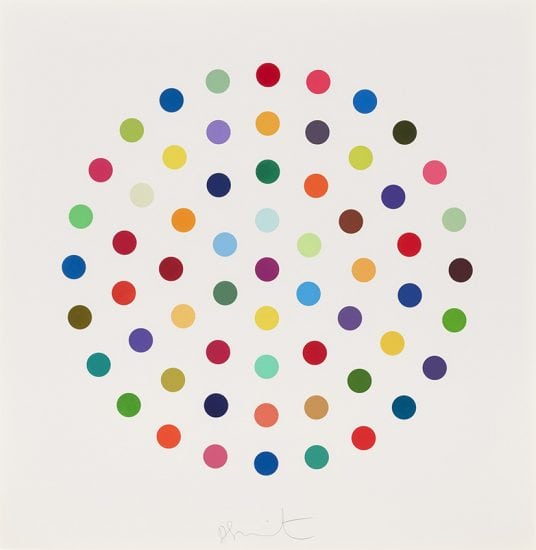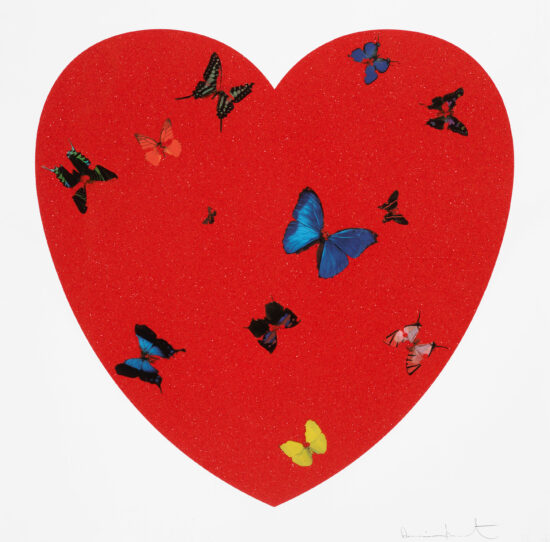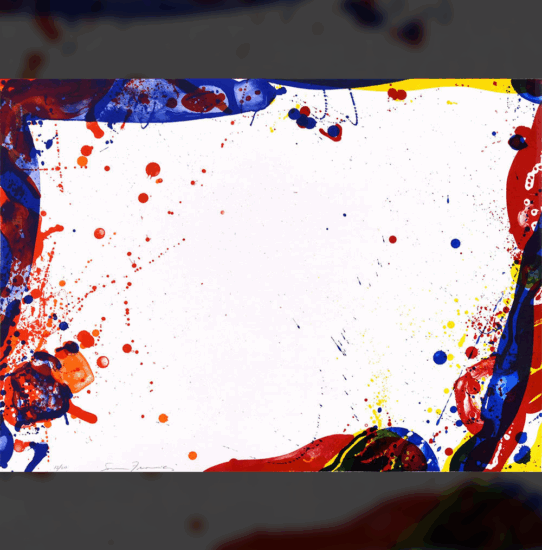Why are Damien Hirst's dot artworks so popular and valuable?
Damien Hirst's dot artworks are popular and valuable due to their unique and visually striking aesthetic that captivates viewers. The dots symbolize themes of life and the passage of time, lending Hirst's pieces meaning that both resonates with audiences and makes them highly sought after in the art world.
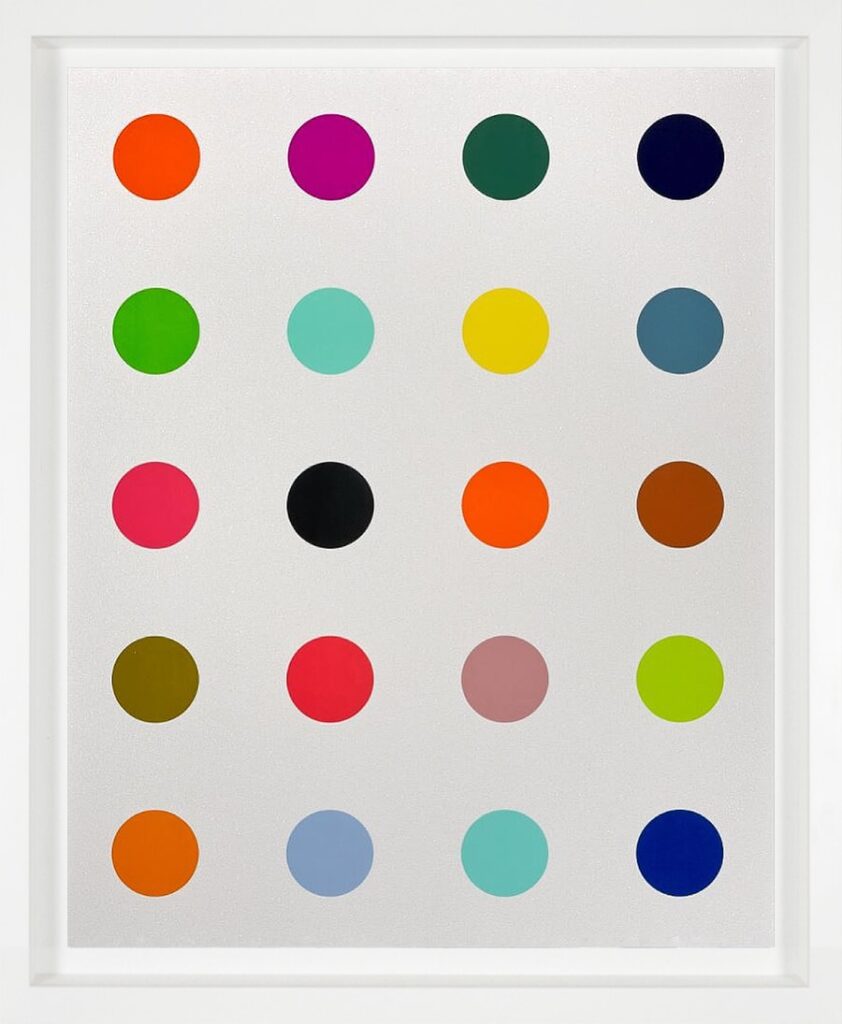
Key Highlights
- Hirst's dot paintings are significant part of contemporary art, recognized their unique and intriguing style and visual impact, as well as their influence on other contemporary artists and styles.
- Fascinated with the art world, Hirst's dot paintings arose from his interest in color and his desire to create something different and captivating.
- Over the years, the dot series has evolved and, by showcasing Hirst's dedication to his craft and ability to push artistic boundaries, has gained a dedicated following.
- Hirst's dots contain symbolic meaning that may not be obvious at first glance, which add compelling layers of meaning to his artwork.
- Hirst's technique behind the dots involves the use of specific materials and systematic methods, showcasing his dedication to his craft and his attention to detail.
- The role of color in Hirst's dot paintings is significant, as colors are rarely repeated within a piece and contribute to the overall minimalist aesthetic and the message of the artwork.
- The market for Hirst's dot paintings is thriving, with collectors and art enthusiasts eager to add one of the estimated 1400 iconic dot paintings to their collections.
Introduction
Damien Hirst is a renowned, although often polarizing, contemporary artist known for his bold and thought-provoking artworks, such as his series of sculptures of preserved animals submerged in glass display cases of formaldehyde — one of which featured a preserved tiger shark. One of his most notable series is his dot paintings, which have captivated audiences and art enthusiasts around the world for their striking yet minimalistic compositions. The concept of using dots as a form of artistic expression may seem simplistic, but Hirst's execution and attention to detail elevate these artworks to another level. In this blog, we will take a closer look at these dot paintings, exploring their genesis, significance, technique, and impact on the art world. We will also delve into Hirst's most famous dot works, analyzing their artistic value and public reception. Continue reading to learn more about the hidden intricacies of Hirst's dot paintings and discover what makes these works — and Hirst oeuvre as a whole — simultaneously controversial and compelling to artists and art collectors around the world.
The Genesis of Damien Hirst's Dot Paintings
The genesis of Damien Hirst's dot paintings can be traced back to his fascination with color and his desire to create something distinct and visually striking. After entering the art world in the late 1980s as a member of the Young British Artists (YBA) and creating a series of bold, shocking works, Hirst began to produce his earliest Spot paintings. Inspired by the works of celebrated twentieth-century artists and the constantly evolving art scene, Hirst began to explore new ways of artistic expression and color experimentation. The use of dots as the primary element in his paintings challenged traditional artistic forms and create a unique visual language that centers color and structure, so that viewer can't help but be drawn into the composition.

Inspiration Behind the Dots
The inspiration behind Hirst's dot paintings comes from his deep connection to the art world and his exploration of various artistic movements. Hirst draws inspiration from artists like Roy Lichtenstein and Pointillism pioneers Georges Seurat and Paul Signac. In Hirst's use of color also appear the influences of Fauvist painters such as Henri Matisse, whose canvas' unnatural, alluring use of color captured the Matisse's interest in the role of color in a composition. Hirst is also influenced by optical art, a style of art that employs repetitive patterns and geometric shapes to create illusions — think Victor Vasarely's often illusionary, abstract geometric works. Hirst's dot paintings reflect his admiration for these artists and movements and draw influence from them, while also showcasing his distinct style and interpretation of the world and color through dots.
Evolution of the Dot Series Over the Years
The dot series by Hirst has evolved over the years, reflecting his growth as an artist and his dedication to pushing artistic boundaries. What started as a simple exploration of dots has transformed into a complex body of work that explores themes of life, death, and the human condition. Hirst's dedication to his craft and his continuous experimentation with different techniques and materials have garnered a dedicated following of art enthusiasts and collectors who are captivated by the evolution of his dot series.
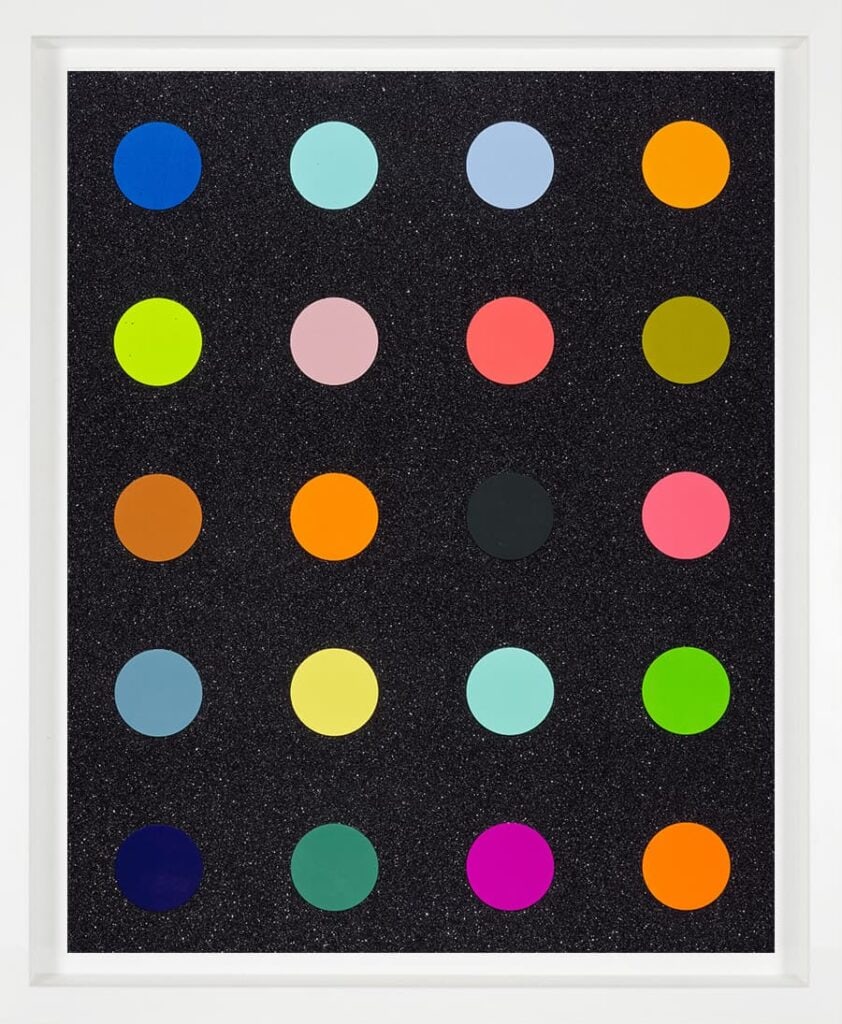
Understanding the Significance of the Dots
The significance of the dots in Hirst's paintings goes beyond their surface-level visual appeal. The dots, both individually and together, hold symbolism and meaning and add layers of interpretation to what may at first just seem like a series of dots in rows. The repetition of dots creates a sense of rhythm and movement, while the meticulous, uniform arrangement and the variety of colors contribute to the overall aesthetic and message of each piece. The dots can represent various concepts, such as individuality, unity, or the passage of time, and beyond these themes, they suggest the artist's interest in the interplay between different colors as they occupy space on the same canvas. Understanding the significance of the dots in Hirst's paintings enhances our appreciation of his art and allows us to delve deeper into the narratives he creates.
Symbolism in Hirst's Dots
There are a variety of ways that the symbolism of Hirst's dots can be interpreted and contribute to the overall message of the artwork. The repetitive, uniform arrangements of the dots could represent the routine of everyday life, while the seemingly endless selection of colors could symbolize the variety of life. The dots can also be seen as a metaphor for the interconnectedness of all living things, as the our perception of each of the dot's color is shaped by the white spaces and colorful dots that surround it. In this way, these dots and their relationships to each other hint at the complex web of relationships that define our existence. In addition to challenging traditional forms of artistic composition, these dot paintings present symbolic representations that lend significant depth to these stylistically minimal pieces. In this way, Hirst encourages viewers to look beyond a work's formal qualities and visual appearance and seek the meanings present behind the patterns, colors, and symbols they encounter in his art.
Impact on Contemporary Art
Hirst's dot paintings have had a significant impact on contemporary art. His unique use of dots as a primary element in his artworks has inspire experimentation with less conventional formal elements and techniques. Hirst's dot paintings have also sparked conversations about the nature of art and the boundaries of artistic expression. While many of his early dot paintings were created by the artist himself, most of the later works have been produced by Hirst's large team of assistants. This feature of these dot paintings ties into the long-standing commentary present in Hirst's works on the relationship between money, consumerism, and art. The boldness and distinctiveness of his art have made him a prominent, if controversial, figure in the contemporary art world. Many of his works have been exhibited in prestigious galleries and museums around the globe, such as the Museum of Modern Art in and the Metropolitan Museum of Art New York City and the Tate Modern Gallery in London. Hirst's influence on contemporary art continues to shape the artistic landscape, pushing boundaries and challenging the status quo.
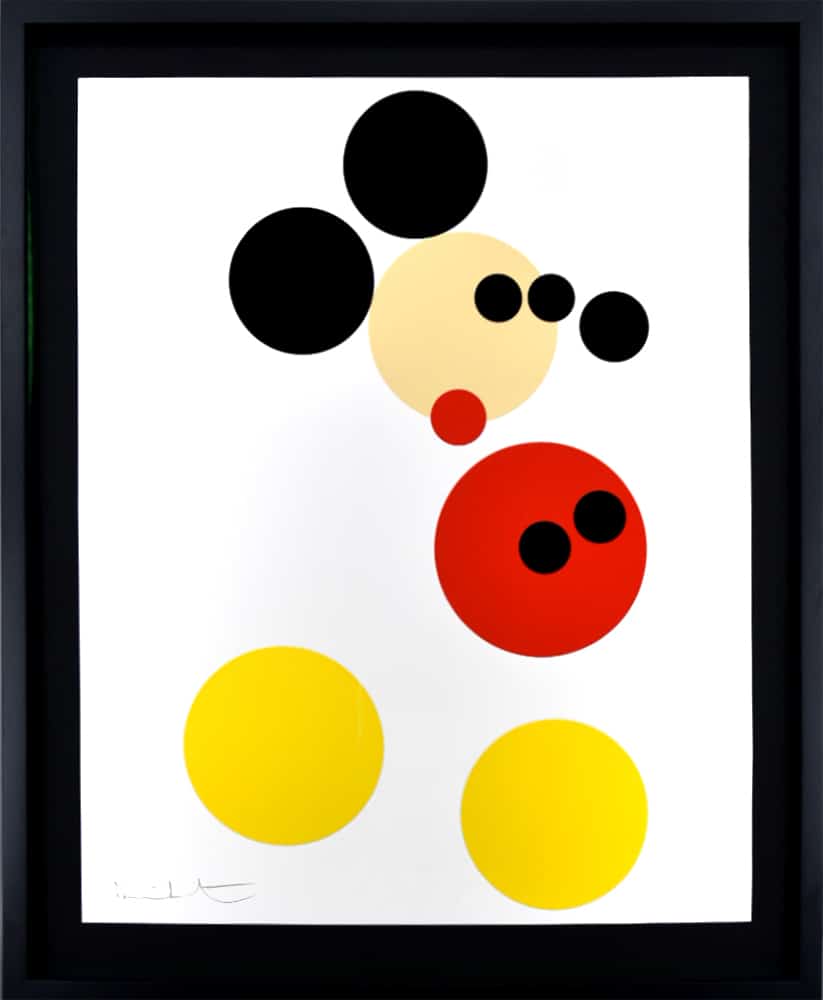
Materials and Methods Used by Hirst
While Hirst employs a variety of materials and methods in his dot paintings, many follow a formulaic structure and pattern that is repeated throughout the production of these works. The majority of Hirst's dot paintings are produced by his assistants, and he uses stencils and grids to achieve precision and consistent placement of dots and ensure uniformity. These tools allow him to create patterns and images with meticulous attention to detail and maintain a high quality of production. Additionally, in the creation of the dots, Hirst removed any evidence of human creation, notably by removing the mark of a compass point left at the center of each spot to create the appearance of mechanically created dots. When it comes to materials, Hirst often uses acrylic paint and household gloss to create the vibrant and glossy surface of his artworks. The combination of these materials and methods results in visually striking and highly sought-after artworks.
Damien Hirst Dot Prints
Damien Hirst's dot prints, are part of his "Spot Paintings" series and are among his most recognizable works. These prints, each named after a different pharmaceutical, typically feature grids of brightly colored circles arranged in a systematic manner. The dots vary in size, color, and spacing, creating a variety of unique yet related compositions. These artworks have gained recognition for their unique style, technical precision, and thought-provoking subject matter. Each of Hirst's dot paintings tells a story and invites viewers to interpret the meaning behind the dots. From his early dot paintings to his more recent large-scale installations, Hirst's dot works showcase his artistic evolution and his ability to captivate audiences with his visually striking and conceptually rich artworks.
In the art market, the value of Hirst's dot prints can vary widely depending on factors such as the specific print edition, its condition, provenance, and current demand. Limited edition prints or those from significant periods in Hirst's career may command higher prices.

Public and Critical Reception
Opinions surrounding Hirst's dot paintings have been both positive and negative. While many admire his unique style and conceptual approach, others criticize the mass-produced quality of his art and question the originality of his ideas. Generally, the public reception of Hirst's dot paintings was more positive than the opinion of critics. His dot paintings found wide appeal among art enthusiasts and collectors, who appreciated his technical precision and attention to detail. Given this public reception, Hirst's dot paintings were rapidly elevated to an iconic status in contemporary art.
However, art critics have criticized the commercialism and potential lack of originality present in his works, especially considering that works like his dot paintings are produced by a team of assistants rather than the artist himself. The mass-produced nature of his art has also led to debates about the value and meaning of his artworks, and how his approach to creating art has impacted the art market and the treatment of art as a commercial good. Hirst has also faced accusations of plagiarism, with at least 16 of his works contested as plagiarized since 1999.
Despite the controversies, Hirst's dot paintings continue to be highly sought-after for the integral role they play in the contemporary art world and the influence they have had on many contemporary artists.
The Market for Hirst's Dot Prints and Paintings
The market for Hirst's dot paintings is thriving, with collectors and art enthusiasts eager to add these iconic pieces to their collections. Hirst's dot works have become highly sought-after, commanding significant prices in the art market. The limited availability of these artworks contributes to their desirability and value. Hirst's dot paintings are often acquired by both private collectors and public institutions, ensuring their visibility and longevity. The market for Hirst's dot paintings reflects the enduring appeal and impact of his art, making them a valuable investment for collectors and a significant part of contemporary art history.
Record-Breaking Sales
Damien Hirst's art has not only gained critical acclaim but has also achieved remarkable sales figures in the art market. In September 2008, Hirst made the unusual choice, for a living artist, to bypass traditional gallery channels and sell his artwork directly at auction. This auction, which the artist named "Beautiful Inside My Head Forever," was held at Sotheby's in London and featured 223 artworks. Selling nearly all of the works put up for auction, "Hirst's work "Beautiful Inside My Mind Forever" earned a staggering $200.75 million, making it the most expensive single-artist auction of all time. This record-breaking auction occurred on the same day that the Lehman Brothers filed for bankruptcy and sent the United States spiraling into economic recession, and many buyers at the auction have faced significant loses. While this auction cemented Hirst's position as a prominent figure in the contemporary art world, it also has further contributed to his controversial legacy, as the auction was a flashy, expensive event that directly preceded financial crisis.
Other Notable Auctions
Damien Hirst's dot paintings have captivated collectors from around the world, with notable auctions showcasing the demand for his artwork. Notable auctions that have included Hirst's dot paintings include the aforementioned "Beautiful Inside My Head Forever," which garnered worldwide attention for its record-breaking sales. Other notable auctions include Phillips' "Damien Hirst: The Complete Spot Paintings 1986-2011," which showcased a comprehensive collection of Hirst's dot paintings, and Christie's "Post-War and Contemporary Art Evening Auction," where Hirst's artwork fetched impressive prices. These auctions highlight the enthusiasm of collectors to acquire Hirst's dot paintings and further solidify their importance in the art market.
Frequently Asked Questions
Why are Damien Hirst's dot paintings significant?
Damien Hirst's dot paintings are significant in the art world due to their unique and distinct style that challenged traditional methods and styles of artistic composition. The meticulous arrangement of dots and vibrant colors create visually striking compositions that provoke thought and contemplation. Hirst's dot paintings have gained recognition globally, receiving both acclaim and criticism, and sparking important discussions about the relationship between art and consumerism. Their significance lies in their ability to challenge traditional notions of art and engage viewers in a conversation about life and the human experience.
How does Hirst choose the colors for his dot paintings?
Damien Hirst's process of choosing colors for his dot paintings involves careful consideration and experimentation. He often uses a wide range of vibrant and contrasting colors to create visually dynamic compositions. Hirst's often unusual color choices reflect his intention to evoke emotions and engage viewers on a visual and emotional level. By using bold and unexpected color combinations and not repeating colors in his works, Hirst pushes the boundaries of traditional color theory and challenges viewers' perceptions of color in art.
Can I purchase a Damien Hirst dot painting?
Yes, Damien Hirst's dot paintings are available for purchase. However, due to their popularity and demand, they often come with a significant price tag. Collectors and art enthusiasts can acquire Hirst's dot paintings through reputable art galleries, auction houses, or directly from the artist's studio. It is important to note that availability and pricing may vary depending on the specific artwork and market conditions. Serious collectors and dedicated followers of Hirst's work may need to demonstrate their commitment and dedication to securing one of his dot paintings.
How has the perception of Hirst's dot paintings changed over time?
Over time, the perception of Damien Hirst's dot paintings has evolved. Initially considered controversial and provocative, they have now become iconic symbols of contemporary art. Hirst's dot paintings have gained recognition and respect in the art world, with their unique style and striking colors and compositions appreciated by art critics, collectors, and enthusiasts worldwide. The evolution of the perception of Hirst's dot paintings reflects the changing dynamics of the contemporary art scene and the shifting preferences of art audiences.


